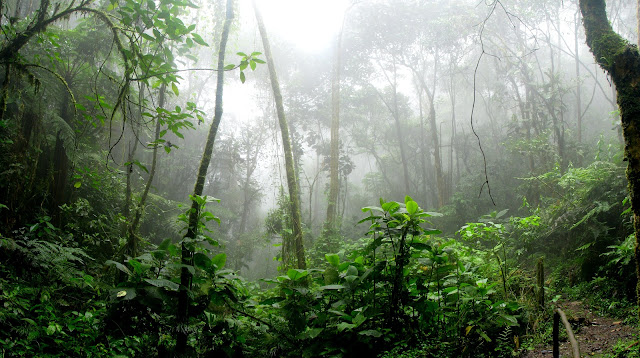The air we breathe contains 21% oxygen, but how much of that oxygen do we actually take in? Oxygen molecules are made up of two atoms bonded together, and the larger oxygen molecule does not pass easily through the walls of our lungs. In fact, it only takes about 3% of the oxygen in the air to make it into our bloodstream.
The other 97% passes from our lungs into our cells and never
makes it into our blood. So how much oxygen are we taking in at any given time?
This article will answer that question and explain why you feel so much better
when you exercise outside.
How much oxygen do plants need?
All living things require oxygen to survive, but plants take it one step further—they need it to grow. While some species can absorb air and make their own food, most plants are totally dependent on other organisms for survival. If you want to grow lush, beautiful flowers or produce a bounty of homegrown fruits and vegetables, you must know how much oxygen plants need to stay healthy.
Fortunately, it’s not difficult to keep track of your plant’s needs;
with just a few minutes spent checking their stems each day, you can maintain a
good growth environment and be assured your greenery will flourish.
How much oxygen is in the air, generally?
The air is roughly 21% oxygen. This may vary slightly depending on local atmospheric conditions, but overall, it’s not far off. The Earth’s atmosphere is made up of a lot more than just oxygen and nitrogen—there are also trace amounts of water vapour, argon, carbon dioxide, helium and other elements and compounds that aren’t found in large quantities but still play a role.
R E A D M O R E
Win-Win Food: Delicious, Healthy Eating for No-Fuss Lovers
How to Use Aloe-Vera for Glowing Skin
All
these combine to make up what we call air. There are different types of air
quality and air pollution standards, which measure various aspects and
components within each type of air.
How much oxygen is produced by photosynthesis?
Plants remove carbon dioxide and produce oxygen as a byproduct of photosynthesis. Photosynthesis is a process that involves capturing sunlight and converting it into chemical energy. Through photosynthesis, plants can perform cellular respiration, which gives them energy for activities like growth and reproduction.
Plants release oxygen as a byproduct of cellular respiration—in
fact, about 50 percent of oxygen on Earth comes from plant-based
photosynthesis. Approximately half (45 percent) of atmospheric oxygen comes
from ocean phytoplankton and other aquatic organisms that do photosynthesis
while living in water; they release what they don’t use into our atmosphere and
it eventually gets mixed with CO2 to create more breathable air for humans.
How much oxygen is produced by plants and trees?
Plants and trees are massive producers of oxygen, with a single large tree generating enough oxygen for a family of four in one year. This is thanks to the nature of photosynthesis, which takes place within plant cells.
When plants absorb carbon
dioxide from our atmosphere and convert it into sugars and starches via
photosynthesis, they also produce oxygen as a byproduct. Fortunately, about 20
percent of all man-made CO2 emissions are absorbed by trees, shrubs and other
plants through photosynthesis.
How much of the earth's atmosphere comprises nitrogen?
78.08 percent by volume. Nitrogen makes up nearly four-fifths of Earth's atmosphere. Of that, 78.08 percent is nitrogen gas (N). Nitrogen, like oxygen, is a diatomic molecule composed of two nitrogen atoms chemically bonded together with a chemical bond called a triple covalent bond.
The triple bond between
nitrogen atoms has two unpaired electrons. It is therefore highly reactive and
an essential part of proteins and nucleic acids (DNA), both vital to life as we
know it.
Nitrogen
gas is colourless, odourless and tasteless at standard temperature and pressure.
However, when heated or subjected to electrical discharge, it forms compounds
that are common pollutants: nitric oxide (NO) and nitrous oxide (NO). Because
of its high reactivity, nitrogen gas cannot be stored for long periods without
special equipment. It must be made from ammonia or other compounds immediately
before use in applications such as fertilizers or explosives.
The role of CO2 and other gases in producing oxygen
We breathe air, which is mostly composed of nitrogen (78%) and oxygen (21%). The oxygen we breathe comes from plants and phytoplankton that use CO2 and water during photosynthesis. Plants then release oxygen into the atmosphere as a waste product of that process. This process is called carbon fixation and produces carbohydrates for plant growth.
Most animals get their oxygen by
breathing it out, but fish absorb dissolved O2 through their gills. Over time,
there have been substantial changes to CO2 levels on Earth due to activity like
volcanic eruptions, atmospheric dust storms and other factors, but they pale in
comparison to those experienced since humans began burning fossil fuels on a
large scale during industrialization, which significantly increases CO2 levels
globally every year.







